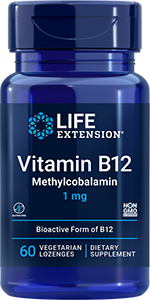 |
March 6, 2009 | | | | In the March, 2009 issue of Clinical Immunology, researchers from the David Geffen School of Medicine at the University of California, Los Angeles and the U.S. Environmental Protection Agency report that sulforaphane, a compound that occurs in cruciferous vegetables such as broccoli, may help protect against respiratory inflammation and the diseases it causes, including asthma, chronic obstructive pulmonary disease, and allergic rhinitis. For their study, the team administered doses ranging from 25 to 200 grams of a preparation of broccoli sprouts, which contain high amounts of sulforaphane, or a preparation of alfalfa sprouts, which do not contain significant amounts of the compound, to 65 men and women for three days. Gene expression of phase II antioxidant enzymes was evaluated in nasal passage rinse samples collected before and after treatment. These enzymes, which include glutathione-s-transferase M1, glutathione-s-transferase P1, NADPH quinine oxidoreductase, and hemoxygenase-1, scavenge free radicals which are believed to be the mechanism by which air pollution and ozone cause airway inflammation. Increases in the expression of antioxidant enzymes were observed among participants who received 100 grams or more broccoli sprouts, while no phase II enzyme induction was observed among those who received alfalfa sprouts. For subjects who received the highest dose of broccoli sprouts, there was a 101 percent increase in glutathione-s-transferase P1 and a 199 percent increase in NADPH quinine oxidoreductase compared to those who received alfalfa sprouts. No significant side effects were observed. "This is one of the first studies showing that broccoli sprouts — a readily available food source — offered potent biologic effects in stimulating an antioxidant response in humans," announced lead researcher Marc A. Riedl, who is an assistant professor of clinical immunology and allergy at the David Geffen School of Medicine. "A major advantage of sulforaphane is that it appears to increase a broad array of antioxidant enzymes, which may help the compound's effectiveness in blocking the harmful effects of air pollution." "We found a two- to three-fold increase in antioxidant enzymes in the nasal airway cells of study participants who had eaten a preparation of broccoli sprouts," Dr Riedl noted. "This strategy may offer protection against inflammatory processes and could lead to potential treatments for a variety of respiratory conditions." | |  |  | | Chronic obstructive pulmonary disease (COPD) is a progressive and debilitating lung disease. The disease is characterized by irreversible airflow limitation in the lungs. The umbrella of COPD encompasses the following conditions: - Emphysema, in which the alveoli in the lungs, the tiny sacs where oxygen transfer takes place, are destroyed and enlarged
- Chronic bronchitis, or the permanent inflammation of airways, accompanied by a chronic cough
Any patients with COPD, emphysema, or bronchitis are urged to stop smoking and to limit their exposure to environmental toxins whenever practical. Additionally, exercise, breathing exercises, and oxygen therapy may be helpful, as well as the use of steam and hot-mist vaporizers. If the breathing difficulty results in trouble eating, a strong multivitamin that includes magnesium is recommended to prevent malnutrition and restore energy to damaged cells. Studies have shown that retinoic acid has a remarkable ability to restore alveolar architecture. Retinoic acid is available as Vesanoid (tretinoin) for the treatment of leukemia, but it can be prescribed for COPD. In addition, the following nutrients have been shown to restore antioxidant capacity and help reduce inflammation: - Vitamin A—25,000 international units (IU) daily
- Vitamin C—3000 milligrams (mg) daily
- Vitamin E—400 IU daily (with at least 200 mg gamma tocopherol)
- NAC—600 mg, three times daily
- CoQ10—200 to 400 mg daily
- Omega-3 fatty acids—1000 mg DHA and 1400 mg EPA daily
- Gamma-linolenic acid—900 to 1800 mg daily
- L-Carnitine—2000 to 3000 mg daily
- Bromelain—500 mg several times daily on an empty stomach
| Life Extension magazine March, 2009 issue now online! 
- On the cover:
- Reports:
- Departments:
- Scientific abstracts:
| |  |   |
| Methylcobalamin is the form of vitamin B12 active in the central nervous system. It is an active coenzyme of the vitamin B12 analogs that is essential for cell growth and replication. The liver may not convert cyanocobalamin, the common supplemental form of vitamin B12, into adequate amounts of methylcobalamin the body may need for proper neuronal functioning. Methylcobalamin may exert its neuroprotective effects through enhanced methylation, acceleration of nerve cell growth, or its ability to maintain already healthy homocysteine levels. For methylcobalamin to be available to the brain, it should be allowed to dissolve under the tongue. | | |   |
| Because humans do not manufacture vitamin C internally, it must be obtained through dietary sources or supplements. Few people realize, however, that vitamin C is a water soluble nutrient that is quickly oxidized and excreted by the body, which limits its efficacy. Until now, those seeking to capture vitamin C’s optimal health benefits have had no choice but to consume it several times throughout the day. Fortunately, a flavonoid antioxidant known as dihydroquercetin functions as a vitamin C “supercharger.” Studies demonstrate that dihydroquercetin acts to inhibit the oxidation of vitamin C, thereby helping to maintain its concentration and to recycle vitamin C throughout the body. This synergistic relationship between dihydroquercetin and vitamin C greatly enhances the efficacy of both molecules in the body’s organs and tissues. | | | |  | | Life Extension Update | | What's Hot | | Life Extension magazine | |

